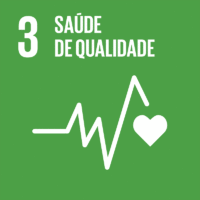Ciência_Iscte
Publicações
Descrição Detalhada da Publicação
Antenna phase center and angular dispersion estimation using planar acquisition setup applied to microwave breast imaging
2020 14th European Conference on Antennas and Propagation (EuCAP)
Ano (publicação definitiva)
2020
Língua
Inglês
País
Estados Unidos da América
Mais Informação
Web of Science®
Esta publicação não está indexada na Web of Science®
Scopus
Google Scholar
Esta publicação não está indexada no Overton
Abstract/Resumo
We propose a “near-field phase center” estimation technique based on planar acquisition setup. It requires a single antenna and an electrically small object to serve as target. The technique allows to estimate the phase center spatial coordinates, as well as its angular dispersion. This data is useful in microwave imaging applications where the antenna operate in near-field regime, such as medical applications (e.g. breast and head imaging). We demonstrate that for a commonly used Vivaldi antenna operating in the 2-5 GHz band, the angular dispersion of the pseudo phase center can be as high as 50 mm. Moreover, we show that incorporating this data in the signal processing algorithms improves the imaging results, by applying it to microwave breast imaging. We believe this type of antennacharacterization techniques will leverage the use of more informative imaging algorithms (e.g. truncated singular value decomposition), since they increase the accuracy of the distance calculations, thus improving the signal to noise ratio.
Agradecimentos/Acknowledgements
--
Palavras-chave
Angular dispersion,Antenna measurement,Balanced Antipodal Vivaldi Antenna (BAVA),Microwave imaging (MWI),Near-field measurement,Phase center
Contribuições para os Objetivos do Desenvolvimento Sustentável das Nações Unidas
Com o objetivo de aumentar a investigação direcionada para o cumprimento dos Objetivos do Desenvolvimento Sustentável para 2030 das Nações Unidas, é disponibilizada no Ciência_Iscte a possibilidade de associação, quando aplicável, dos artigos científicos aos Objetivos do Desenvolvimento Sustentável. Estes são os Objetivos do Desenvolvimento Sustentável identificados pelo(s) autor(es) para esta publicação. Para uma informação detalhada dos Objetivos do Desenvolvimento Sustentável, clique aqui.

 English
English



